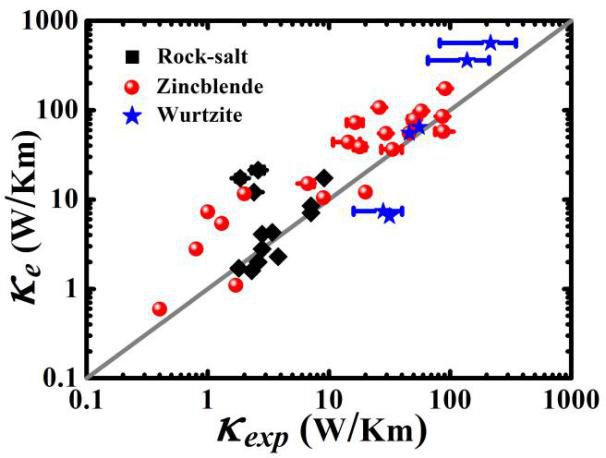
A Chinese research team led by prof. ZHANG Yongsheng at Institute of Solid State Physics, Hefei Institutes of Physical Science has proposed a fast and effective method to calculate the thermal conductivity of materials by using the elastic constants of materials.
Thermoelectric material is an important functional material to directly convert heat into electricity. The most important subject in the thermoelectric research field is to search high-efficient thermoelectric materials. Therefore, it is regarded as one of the most important methods to explore thermoelectric materials with low lattice thermal conductivity for the energy conversion efficiency determination.
However, the lattice thermal conductivity evaluation requires time-consuming first-principles (quasi)phonon calculations, which limits seeking high-performance thermoelectric materials through high-throughput computations.
The previous studies have pointed out that the low thermal conductivity of the lattice is attributed from the strong lattice anharmonicity, which results from the weak interatomic interactions or soft elastic properties.
Considering this, the research team proposed a new methodology to calculate the thermal conductivity of materials using the elastic constants of materials.
The lattice thermal conductivity related parameters (the Debye temperature D, Grüneisen parameter r, and lattice thermal conductivity k) are calculated using the computationally feasible elastic properties (the bulk and shear moduli).
And the team applies the method to calculate the lattice thermal conductivity in 39 binary compounds with three different prototypes (rock-salt, zincblende and wurtzite). For these compounds, the theoretically calculated D, r, and k are in reasonable agreement with those determined using the (quasi-)harmonic phonon calculations or the experimentally measured.
The results show that the methodology is a useful tool to predict the lattice thermal conductivity of materials and can be used to seek low thermal conductivity in the high-throughput thermoelectric computations.
The relevant results were published in Physical Review B entitled Lattice thermal conductivity evaluated using elastic properties.
The research is supported by the financials of National Natural Science Foundation of China and the Major/Innovative Program of Development Foundation of Hefei Center for Physical Science and Technology Grant.



86-10-68597521 (day)
86-10-68597289 (night)

86-10-68511095 (day)
86-10-68512458 (night)

cas_en@cas.cn

52 Sanlihe Rd., Xicheng District,
Beijing, China (100864)

